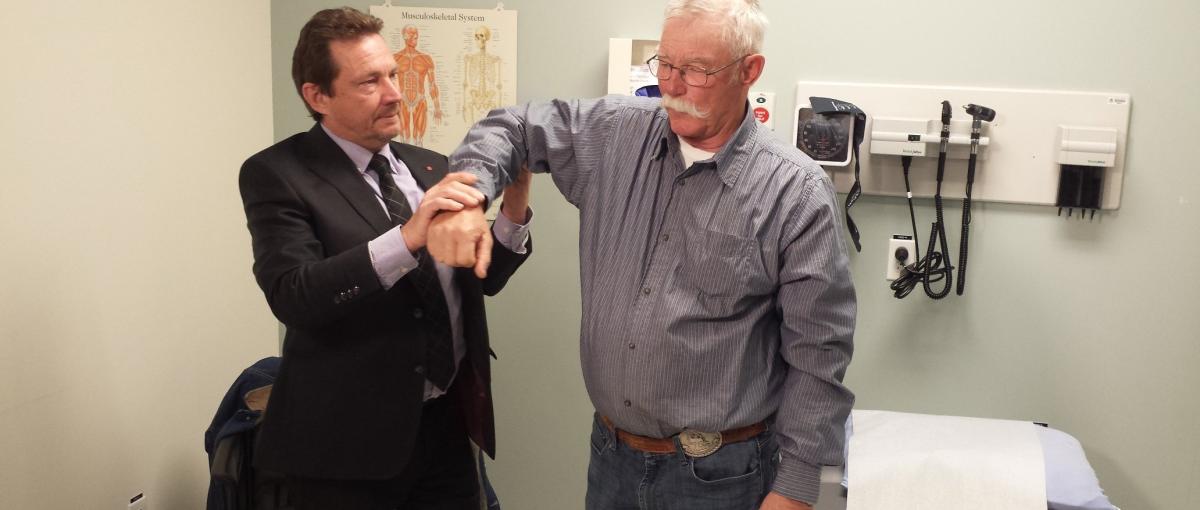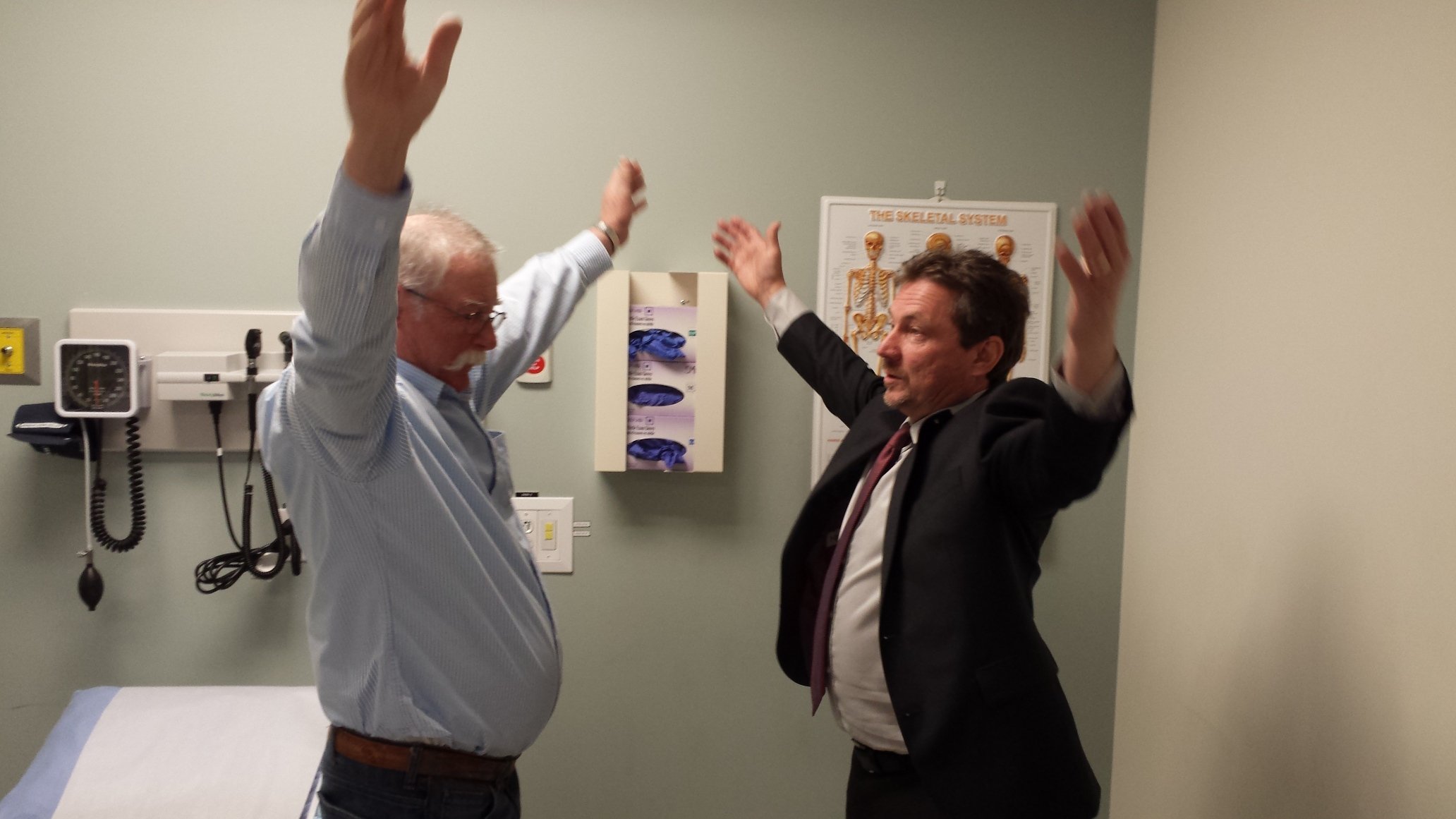Fling the sling after rotator cuff surgery
New research shows not wearing sling after surgery can speed up patients' recovery and return to mobility

September 12, 2016
By Greg Kennedy, Senior Writer/Communications Advisor, Alberta Health Services
Whether he’s riding horses around his acreage near Westlock, or building fences and sheds under the big Alberta sky, Douglas Gilroyed does not like to be confined, especially by a sling after shoulder surgery. That is what made this very active retiree the perfect choice to take part in research about the best recovery strategy for patients who undergo rotator cuff repair.
Conventional rehabilitation following the procedure requires strict immobilization in a sling with no active motion of the shoulder for four to six weeks. However, Dr. Robert Balyk, Chief of Orthopedics at the Grey Nuns Community Hospital, often observed that the “cheaters”—those who didn’t wear their slings as instructed—did, indeed, prosper. They appeared to enjoy a better quality of life and an improved range of motion sooner than patients who did.
“The benefits of early active motion led us to question whether strict immobilization [after surgery] was truly required,” says Robert. He and his colleague Dr. David Sheps, Facility Medical Director at the Sturgeon Community Hospital in St. Albert, wanted to research the validity of this hypothesis.
Douglas was one of 189 patients who participated in a study to assess the effects of early mobilization compared with standard rehabilitation following the surgery.
“I wore the sling home; after that I never wore it,” says Douglas, who received surgery on both shoulders. He was instructed to do his usual daily activities as long as there was no pain and to avoid heavy lifting for the first three months.

Orthopedic Surgeon Dr. Robert Balyk (left) checks on the range of motion of 69-year-old Douglas Gilroyed, who underwent surgery to repair rotator cuff tears in both his shoulders.
After undergoing rotator cuff repair, the study patients were assigned, at random, to either adopt early mobilization or standard rehabilitation. They underwent assessments six weeks after the procedure and had checkups at six, 12 and 24 months.
At the first assessment, patients who began early active motion showed significantly better range of motion than those who wore their slings for six weeks.
At 24 months, early mobilization did not result in any long-term complications. There were no differences in healing or re-tear rates, the surgeons’ biggest concern.
“Although the final outcome was the same in both groups, recovery was quicker in the early mobilization group,” says David. “It may make sense to allow patients to remove their slings sooner."
The research has garnered international attention. Last year at the annual meeting of the American Academy of Orthopedic Surgeons, the two doctors' groundbreaking research was chosen as one of 15 papers most likely to change clinical practice in the next two to three years.